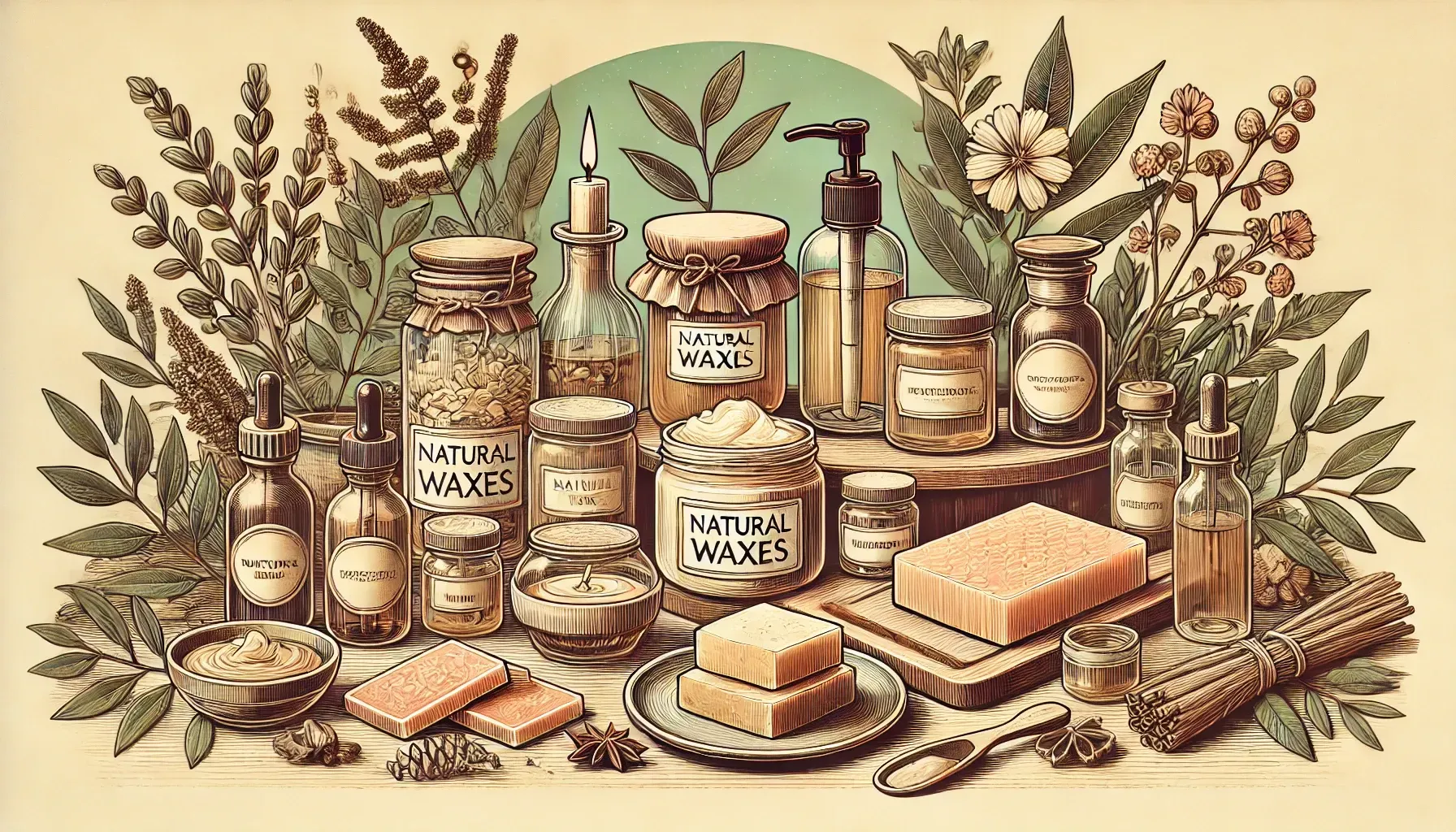Do you want to enrich your cosmetic line with high-quality natural or synthetic waxes? At Chrambl we offer tailor-made solutions in the field of cosmetics manufacturing. Contact us for your private label products and find out how we can help you strengthen your brand.

Waxes in Cosmetics – Natural and Synthetic Waxes
and their role in skin care products
Waxes are an indispensable part of cosmetics. They play an important role in the formulation of skin care products, lip care and decorative cosmetics. Waxes can be of natural origin, such as beeswax or carnauba wax, or synthetically produced.
They have a variety of functions, including forming a protective layer on the skin, binding moisture and increasing the shelf life of cosmetics.
Types of waxes:
Waxes fall into two main categories: natural and synthetic. Each of these categories has specific properties and benefits that are used in cosmetic products.
Natural waxes:
Natural waxes come from plants or animals and often have nourishing and protective properties. They are commonly used in lip balms, creams and ointments.
Beeswax (Cera Alba): Protects the skin, forms a moisturizing film and has a slightly antibacterial effect.
Carnaubawachs (Copernicia Cerifera Wax):
Gives cosmetic products a hard consistency, increases the shine in lipsticks and provides long-lasting protection.
Kakaobutter (Theobroma Cacao Seed Butter):
Has moisturizing and nourishing properties, protects the skin from drying out.
Synthetic waxes:
Synthetic waxes are chemically produced compounds that are often more stable and consistent than natural waxes. They are often used in color cosmetics and skin care products because they are easy to process and provide a consistent texture.
Polyethylene Wax: Used in lipsticks and foundation to create a smooth, even finish.
Microcrystalline wax: Particularly suitable for solid cosmetic products such as deodorants and lip balms.
Advantages of waxes in cosmetics:
Waxes fulfill various functions in cosmetic products:
Protective layer: They form a barrier on the skin that locks in moisture and protects against harmful environmental influences.
Texturing: Waxes ensure the right consistency of products, especially in lip balms and creams.
Moisturizing: They help keep the skin soft and supple by retaining moisture.
Stability: Waxes increase the stability of cosmetic products and prevent them from separating or decomposing.
| Designation | INCI-Name | area of operation | effect on the body |
|---|---|---|---|
| Arganwachs | Argania Spinosa Wax | hair care, skin care | Smoothing, nourishing |
| Avocadowachs | Persea Gratissima Wax | creams, hair care | Nourishing, moisturizing |
| Babassubutter | Orbignya Oleifera Seed Oil | skin care, hair care | Moisturizing, protective |
| Baumwollsamenwachs | Gossypium Herbaceum Wax | creams, lip care | Moisturizing, nourishing |
| Beerenwachs | Rhus Verniciflua Peel Wax | skin care, lip care | Shine-giving, nourishing |
| beeswax | Alba Wax | lip care, creams | Protective, antibacterial |
| Candelillawachs | Euphorbia Cerifera Wax | lip balm, mascara | Protective, film-forming |
| Carnaubawachs | Copernicia Cerifera Wax | lipstick, hair care | Shine-giving, firming |
| Thistlewax | Paper Dye Wax | creams, lotions | Smoothing, nourishing |
| peanut wax | Arachis Hypogaea Wax | creams, skin care | Protective, caring |
| raspberry seed wax | Rubus Idaeus Seed Wax | lip care, creams | Nourishing, antioxidant |
| Japanese wax | Rhus Succedanea Fruit Wax | ointments, creams | Protective, skin-care |
| Jojobawachs | Simmondsia Chinensis Wax | lip care, skin care | Smoothing, protective |
| cocoa butter | Theobroma Cacao Seed Butter | creams, lotions | Moisturizing, nourishing |
| Coconut wax | Cocos Nucifera Wax | creams, lip care | Protective, moisturizing |
| pumpkin seed wax | Cucurbita Pepo Seed Wax | skin care, hair care | Moisturizing, nourishing |
| Lanolinwachs | Lanolin Wax | ointments, creams | Moisturizing, softening |
| Mangobutter | Mangifera Indica Seed Butter | body care, hair care | Moisturizing, nourishing |
| Marulaöl | Sclerocarya Birrea Seed Oil | skin care, anti-aging products | Skin soothing, nourishing |
| Microcrystalline wax | Microcrystalline Wax | lipsticks, deodorants | Texturizing, firming |
| olive wax | European Fruit Wax Oils | skin care, hair care | Nourishing, moisturizing |
| Palmenwachs | Elaeis Guineensis Wax | hair care, skin care | Protective, texturizing |
| Polyethylenwachs | Polyethylene Wax | lipsticks, foundation | Smoothing, protective |
| rice bran wax | Oryza Sativa Bran Wax | skin care, decorative cosmetics | Moisturizing, protective |
| castor wax | Ricinus Communis Seed Wax | lipsticks, creams | Protective, smoothing |
| Sheabutter | Butyrospermum Parkii Butter | body care, hair care | Skin soothing, regenerating |
| Sojawachs | Glycine Soya Wax | candles, skin care products | Caring, protective |
| grape seed wax | Vitis Vinifera Wax | skin care, anti-aging products | Antioxidant, moisturizing |
| wheat germ wax | Common Wheat Wax | hair care, creams | Protective, caring |






